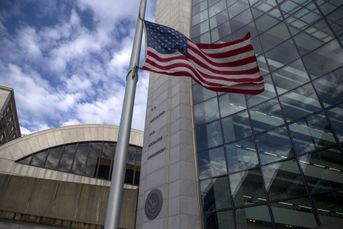Americans have been saving much more than thought, new data show

Revised government statistics show households saved 6.7% over the past two years, up from the previously reported 4.2% rate
Americans may not be such spendthrifts after all.
U.S. households have been socking away a lot more money in recent years than had been earlier thought, revised government statistics released Friday showed. The savings rate over 2016 and 2017 is now pegged at an average 6.7%, up from a previously reported 4.2%.
The new data may help quell some economists’ concerns that consumers were becoming so pinched that they would have to cut back on their spending in order to put more money aside.
But there’s a catch: Most of the revision to savings in recent years came about because small business owners and other proprietors made more money to salt away, not because workers got bigger wage increases.
The comprehensive update of gross domestic product carried out every five years by the Commerce Department’s Bureau of Economic Analysis rewrote recent history in other ways as well. Business investment, especially in high-tech equipment, was marked up.
So too was economic growth in the first quarter of most recent years, the final step in a drive to improve the seasonal adjustments that the BEA makes.https://www.investmentnews.com/wp-content/uploads/assets/graphics src=”/wp-content/uploads2018/07/CI116479727.PNG”
Savings Rate
The household savings rate was revised higher in 10 of the last 11 years in the latest update, sometimes substantially. The changes were mainly driven by new IRS data showing that proprietors’ income was much bigger than previously known.
The mark-up in last year’s rate to 6.7% from 3.4% also reflected a change in the seasonal adjustment for employee compensation.
(More: DC participants with 401(k)s and HSAs have higher savings rates for 401(k) and overall)
Seasonality Issues
BEA officials believe they’ve now scrubbed the data clean of the so-called residual seasonality issues that have been artificially depressing first-quarter growth. First-quarter GDP is now calculated to have risen by an average annual rate of 1.6% from 2002 to 2017, versus 1.2% previously.
For 2017, the contours of growth showed a slower second half than previously reported. The first quarter was revised to a 1.8% pace from 1.2% and the second quarter went to 3% from 3.1%. The third-quarter pace was reduced to 2.8% from 3.2%, and the fourth quarter ended up at 2.3%, after a previously reported 2.9%.
The first quarter of 2018 was revised to a 2.2 percent growth pace from 2 percent.
The bureau also began on Friday to publish GDP data that’s not been seasonally adjusted so economists can make their own calculations of how changes in the calendar affect economic activity.
In spite of the various tweaks to the numbers, the overall narrative of the economy’s performance over the last decade has not really changed.
The recession that began in December 2007 is still the deepest since the Great Depression, though it’s a shade less terrible than previously thought: GDP contracted by 4%, rather than 4.2%.
And the expansion that began thereafter remains the weakest of the post-World War II period, with an average annual growth rate of 2.2%.
Learn more about reprints and licensing for this article.








